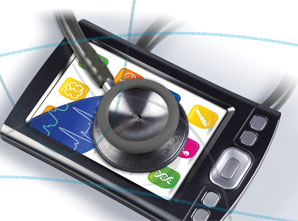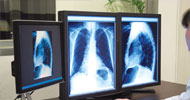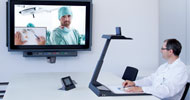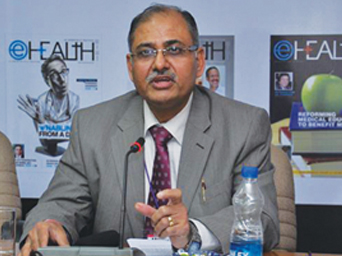Rajeev Agarwal, Business Head, Healthcare Informatics, Philips, believes that supply of good quality healthcare specialists is a constraint to healthcare expansion/growth and thus there is a need to invest in informatics systems and solutions to allow the existing specialists to scale and provide quality care to more patients
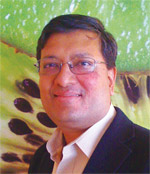 Rajiv Agarwal, General Manager, Healthcare Infomatics, Philips
Rajiv Agarwal, General Manager, Healthcare Infomatics, Philips

Health IT market is growing
Market has reached an inflexion point and the whole healthcare industry has moved beyond the experimentation stage. They realise that it is a critical part of their operations; as evidenced by any new hospital that is being set up starts with IT. Right now it is not very sophisticated, but the inflexion point has been reached. The government has also started investing. We actually see tenders coming out regarding HIMS, RIS, PACS, etc. They normally are followers, but the fact is that they are investing. It is a clear indication that this is the right time and the market is growing. There are multiple ways of estimating, slicing and dicing, but our estimate is that currently it is around Rs 700 crore of a market and is growing at around 26 percent. If you look at various cuts in some areas, it is growing slower, like HIS is growing slower, but the CIS, PACS are growing faster.
Further, the clinicians, radiologists, oncologists, or cardiologists are a scarce resource. For healthcare, as a system to work, demand is not the constraint. India is becoming the disease capital of cardiac diseases, oncology patients and looking at this scenario both the government as well as insurance providers are now investing. What we think is that the constraint in the healthcare system is not of demand but that of supply. Supply of good quality specialized healthcare professionals is a constraint. Government is setting up medical colleges, but it will take the next 10 to 15 years to have an impact, till then we are already facing a shortage even in the tier 1 centres, forget the tier 3 tier 4 centres. We have our own R&D centres over here and are also doing a lot of partnership and alliances for the same, with special attention to every sector and product segment and we are very positive about the healthcare IT.

| Emerging informatics will reduce expenses as well as increase expenses. An investment in the space of emerging informatics needs an initial capital outlay, which can be put up by the facility or companies like us who do those kinds of deals which are not just a capex model but also opex model. All our solutions are bringing in the face that imaging or critical care, the physician is at the centre. So our focus is on their empowerment and making things virtually available. The core idea is to provide productivity and enhance the revenue |
Philips offers
Philips has taken a clinical approach to the market with systems related imaging informatics (cardiology, oncology, or radiology imaging) and critical care informatics, which can be within hospital or outside hospital; oncology informatics and cardiology informatics which cut across a small hospital centre. There are many players in the imaging informatics market that are new and there are only a couple of players who are competing in this space.
IT is affordable..
Informatics will reduce expenses in the medium to long run as well as increase expenses. An investment in the space of informatics needs an initial capital outlay, which can be put up by the facility or companies like us who do opex deals as well. Currently the carrier of all the information is the patient himself and the knowledge of the output is retained with the radiologist. So if they go from one radiologist to another, or to a referring doctor, the patient is the one who is carrying it and he owns the data. However, they are yet at the mercy of the referring doctor as he might just not agree with the reports that will make the patient go in for another test. So they will end up paying more. But if the radiologist or the hospital retains the image, the benefit to the hospital is that they can retain their customers. When you look at diseases like cardiology and oncology the patient is pretty much comes back for the next 7 to 8 years. So it makes business sense for them to retain the image. It also makes sense for the patient because they dont have to do a repeat test again and again. Also, in case of a referral, they can automatically have them sent electronically. So thats how the economics will work out. Initially there will be an outlay, but that is less than the benefits that are there in future. It is easier to pay some money, rather than repeating the test.
How is Philips different…
It is not just offering productivity but also helping clients scale their businesses, gain more revenue and see more patients with the same setup. It is basically a force multiplication of their current capabilities. Globally Philips is ranked #3 Overall Software Vendor rated by the independent agency KLAS, so we are bringing in our clinical expertise and credible track records and build our reputation. Most of our solutions are targeted towards productivity. Along with this, we are also iving them a solution that will convert them into a force multiplier.
Phillips is entering this segment in India, because we are a worldwide leader in this space also. However, differentiation is the key here. Our focus is providing clinical expertise because we understand things better than other local vendors or MNCs. Late entrants face challenges but they also have some advantages. You see all the mistakes that others have made, learn from them and position yourself accordingly. We have come in with the approach that there has to be a tele-model. Our focus is on physician empowerment and making things virtually available. The core idea is to provide productivity and enhance the revenue.
Telemedicine
The first generation of tele-imaging is all about getting the image back. What we are combining with is what we call clinical decision support. In the original model 10 patients will be seen in an hour. But with the help of CDS, they can attend up to 15 patients an hour. They can see more patients, and if they choose they can actually charge less.
Challenges…
You are a global player but you have to customise according to local needs so we have a large R&D setup in india to allow us to be fast and flexible locally. Another challenge is that healthcare IT needs to prove its value. We bring credibility from what we have learnt globally. If you want to play well from a tele side, you need a very good and robust telecom partner. Telecommunication in india has grown well so it will provide the reach, but when you come to healthcare like applications we need reliability and that is still not up to the mark.
Be a part of Elets Collaborative Initiatives. Join Us for Upcoming Events and explore business opportunities. Like us on Facebook , connect with us on LinkedIn and follow us on Twitter , Instagram.




